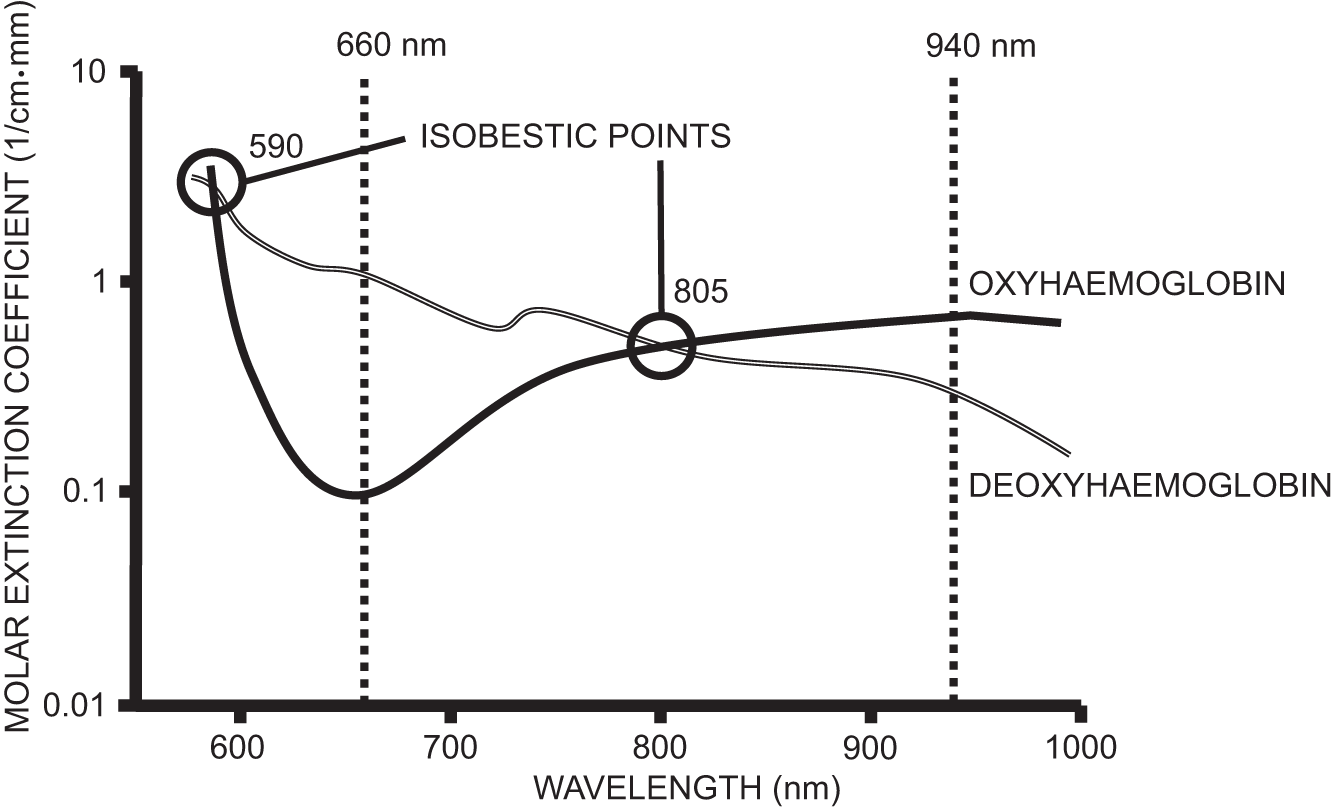Absorbance is a dimensionless number; 0 indicates no absorbance of light, while 1 indicates 90% of light has been absorbed. Absorbance >1 is uncommon, as Beer–Lambert’s law ceases to be true at extreme substance concentrations. This is due to:
Electrostatic interactions between molecules in close proximity altering substance properties (ɛ).
Scattering of light without true absorption.
Shifts in chemical equilibria as a function of concentration.
Changes in refractive indices at high analyte concentrations.
The pulse oximeter is a non-invasive monitor of arterial oxygen saturation, which is based upon the Beer–Lambert’s law.
Transmission oximetry uses a probe placed on a finger, earlobe or foot. It contains two light-emitting diodes (LEDs), one transmitting monochromatic light at 660 nm (red) and the other at 940 nm (infrared). Light penetrates tissues and is detected by a photodiode on the opposite side of the probe, then analysed.
Oxyhaemoglobin absorbs infrared light and reflects red light (giving its red appearance), more than deoxyhaemoglobin, which absorbs more red light than infrared light. Each LED is switched on and off in turn several times a second. This allows the photodiode to analyse the absorption of each wavelength separately, because it detects the total amount of light transmitted but cannot distinguish between wavelengths. A period with both LEDs off between cycles allows adjustment for ambient light. 
The absorbance spectra of oxyhaemoglobin and deoxyhaemoglobin are shown in the graph above. Isobestic points occur where absorbance is the same for both haemoglobins; this is used to calculate haemoglobin concentration.
The ratio of red to infrared light transmitted at each wavelength determines the ratio of oxyhaemoglobin to deoxyhaemoglobin, giving a saturation percentage. Venous blood, capillaries and tissues absorb a large proportion of light (depicted in the diagram below) which could provide erroneous results if analysed. Subtracting the minimum transmitted light from peak transmitted light at each wavelength allows analysis of only the pulsatile component (arterial blood) of the signal. 
Stay updated, free articles. Join our Telegram channel

Full access? Get Clinical Tree





